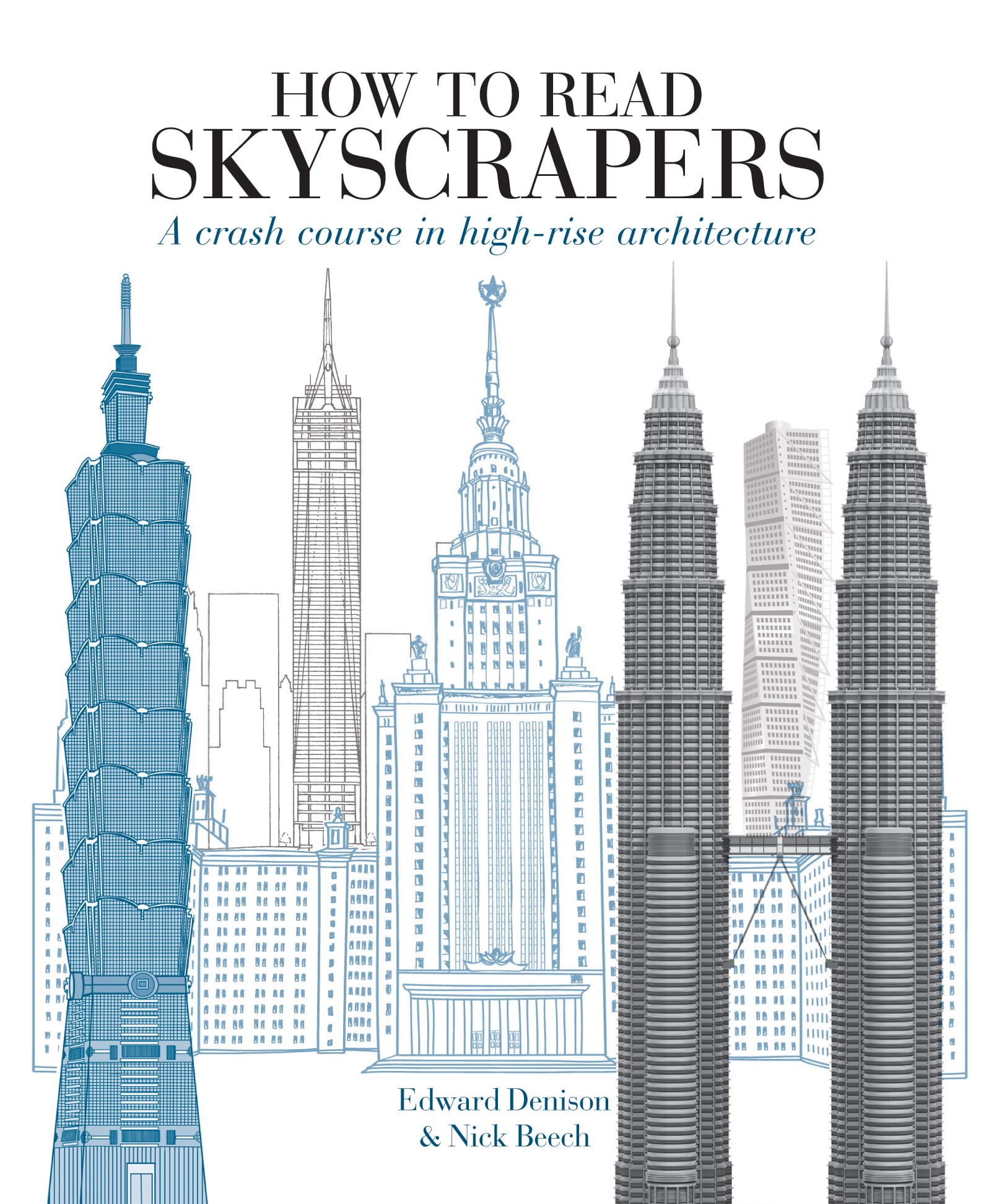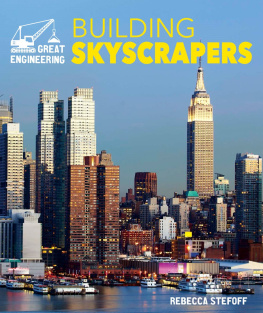Denison Edward - How to Read Skyscrapers
Here you can read online Denison Edward - How to Read Skyscrapers full text of the book (entire story) in english for free. Download pdf and epub, get meaning, cover and reviews about this ebook. year: 2019, publisher: Ivy Press, The, genre: Romance novel. Description of the work, (preface) as well as reviews are available. Best literature library LitArk.com created for fans of good reading and offers a wide selection of genres:
Romance novel
Science fiction
Adventure
Detective
Science
History
Home and family
Prose
Art
Politics
Computer
Non-fiction
Religion
Business
Children
Humor
Choose a favorite category and find really read worthwhile books. Enjoy immersion in the world of imagination, feel the emotions of the characters or learn something new for yourself, make an fascinating discovery.

- Book:How to Read Skyscrapers
- Author:
- Publisher:Ivy Press, The
- Genre:
- Year:2019
- Rating:4 / 5
- Favourites:Add to favourites
- Your mark:
- 80
- 1
- 2
- 3
- 4
- 5
How to Read Skyscrapers: summary, description and annotation
We offer to read an annotation, description, summary or preface (depends on what the author of the book "How to Read Skyscrapers" wrote himself). If you haven't found the necessary information about the book — write in the comments, we will try to find it.
How to Read Skyscrapers — read online for free the complete book (whole text) full work
Below is the text of the book, divided by pages. System saving the place of the last page read, allows you to conveniently read the book "How to Read Skyscrapers" online for free, without having to search again every time where you left off. Put a bookmark, and you can go to the page where you finished reading at any time.
Font size:
Interval:
Bookmark:


A crash course in high-rise architecture

Edward Denison & Nick Beech

N early 3,000 years ago, the Assyrian king Sennacherib boasted of building walls as high as mountains when transforming the city of Nineveh into the largest city in the world. Despite the renown of these monumental fortifications, their height paled in comparison to the Great Pyramid of Giza, erected almost 2,000 years earlier during the reign of a similarly absolute ruler, Pharaoh Khufu. Khufus tomb remained the tallest artificial structure for more than 3,800 years until the construction of the cathedral spire in Lincoln, UK, from the late twelfth century. In the subsequent centuries, the worlds tallest structures were testament to the uniquely human belief in spiritual authority, a belief that began to wane at the dawn of The Enlightenment and the irrepressible march of science, technology and commerce. Today, these same forces have resulted in buildings that would far surpass the imagination of ancient pharaohs, kings, and priests.
Yet, whether for posterity, defense, worship, business, or pleasure, every skyscraping structure ever constructed shares the common dependence on the combination of a concentrated wealth and power of a few, the speciality knowledge of experts, and the labor of many. When humankinds concerns were directed toward the earthly powers of kings and spiritual powers of gods, the tallest buildings were necessarily directed and delivered by the State and Church. Since the Enlightenment, the marketwhether in the shape of powerful private individuals or corporationshas been just as probable to possess the wealth and will to build tall.
These powerful interests today have access to technologies and knowledge far beyond that possessed by the ancients and peoples of the Middle Ages. Stone, wood, and clay, and the arts of stereotomy, have given way to iron, steel, concrete, and glass, and the science of structural engineering. But prior to the modern age, the civilizations of Europe, Africa, Asia, and the Americas were able to create buildings of heights that first matched and then surpassed the monuments of the ancient world. Through unique forms of trade, bureaucracy, and social order, highly skilled stonemasons and carpenters erected vastly complex towers.
The organization of labor and professions in modernity have resulted in an extraordinary development of the construction industry. Mechanized mass production, digital design and procurement tools, robotics, new materials, and a global workforce have led to unparalleled building proficiency. The modern skyscraper is little more than a century old, yet it has in its lifetime more than quadrupled in height, putting the long-fabled milestone of a kilometeror 3,280 feettall now literally and firmly within reach.

Medieval marvel
On completion of the central spire in 1311, Lincoln Cathedral was 525 feet (160 m) high. The cathedral was the worlds tallest building until its spire collapsed in 1548.
But it is not only height that marks the advance of the skyscraper. The modern skyscraper has come to represent the flowering of particular cultures in the twentieth centuryparticularly in North Americaand subsequently the new global cities of the Pacific, Indian Ocean, and Middle East. Being a symbol of commerce in the present as well as a vision of the future, the esthetics of the skyscraper often reveal the ideologies and motivations of clients and designers. At the same time, the skyscraper is marked by environmental concerns. Situated in landscapes that may be prone to earthquakes, extreme temperatures and weather, or rising sea levels, modern engineers have sought to stabilize and secure the skyscraper as a structure, resulting at times in extraordinary forms. Similarly, the need to reduce carbon emissions under the threat of global warming has resulted in ingenious heating, cooling, lighting, and even new ecological systems. Skyscrapers have by their very nature constantly challenged the established practices of the myriad professions engaged in their design and construction. Through extraordinary ingenuity and innovation, these buildings have transformed most cities on the earth and have become one of the quintessential images of urban and architectural aspiration.
This book charts the history of humankinds desire to build tall through the structures and buildings that exemplify this compulsion throughout the ages and across the world. The intention is not to provide a catalog of the biggest and the best, but instead to reveal the more complex history of skyscrapers globally. This book is not, therefore, merely a guide to reading the buildings themselves through their histories, innovations, and characteristics, but an attempt to provide a reading of the genre and how it impacted different places, cultures, and professions throughout time.

Soaring ever higher
Urban necessities or arrogant follies, the passion for building talland megatallhas defined the skyline of cities on almost every continent.
For thousands of years, long before the skyscrapers of the modern world, humans have built upward, desiring to look down on the earth from above. Pharaohs and priests sought to cement their authority in the cosmic order. Later religious buildings reached upward, not to storm the heavenly, but to reflect its majesty. Tall buildings often had practical, secular ends, too. Commanding the landscape had military benefits, while height proved protection against natural forces and enabled the study of nature.
What makes a skyscraper can also change with perspective. A person from Chicago or Tokyo may look at the ruins of a Roman bath house in Great Britain and shrug. But when the Anglo-Saxons of the tenth century discovered those ruins in the undergrowth, they found them so awesome to behold that they were ascribed to giants. But in fact those ancient monuments were the product of practical human actions. Utilizing wood, clay, stone, and iron, builders of the past created monuments that have stood into our own day. Ancient monuments were the product of the most advanced technologies of their time. Levers, ramps, pulleys, razor-sharp cutting tools, highly organized and skilled craftspeople, and armies of labor were combined and directed to create these cultural wonders.
Beginning this book on skyscrapers with the history of ancient tall buildings, we get more than just a prehistory. Examining these monuments reveals the broad range of motivations for building tall, which still drive many of our skyscraper projects today.

Font size:
Interval:
Bookmark:
Similar books «How to Read Skyscrapers»
Look at similar books to How to Read Skyscrapers. We have selected literature similar in name and meaning in the hope of providing readers with more options to find new, interesting, not yet read works.
Discussion, reviews of the book How to Read Skyscrapers and just readers' own opinions. Leave your comments, write what you think about the work, its meaning or the main characters. Specify what exactly you liked and what you didn't like, and why you think so.








